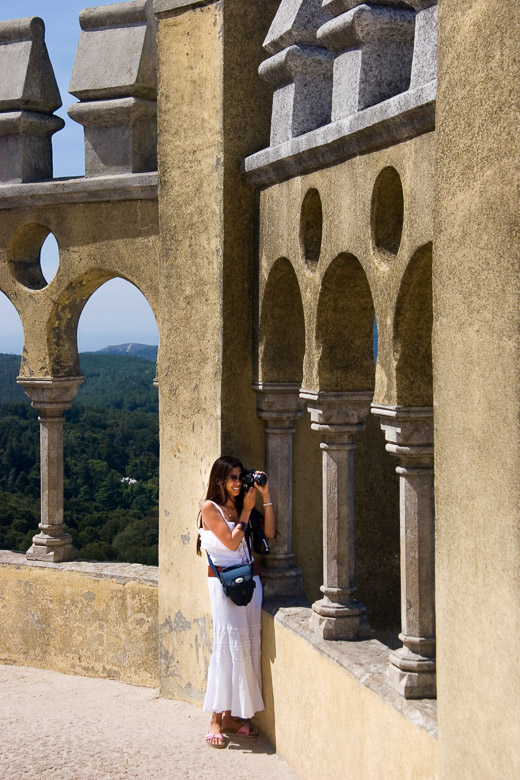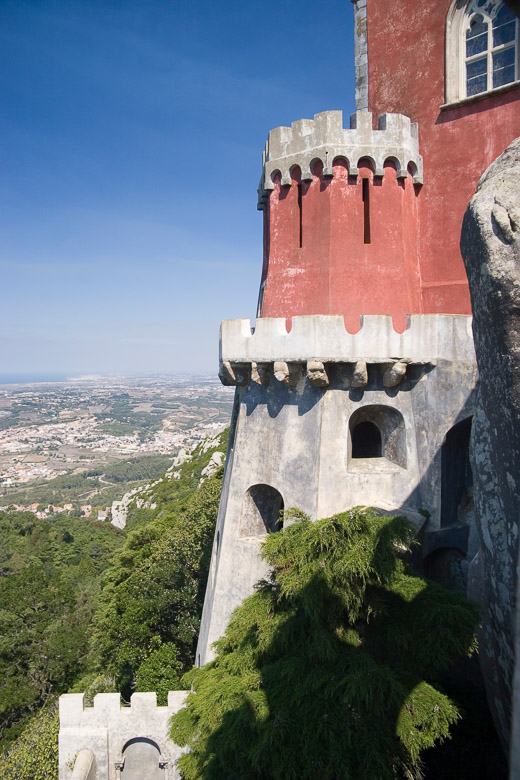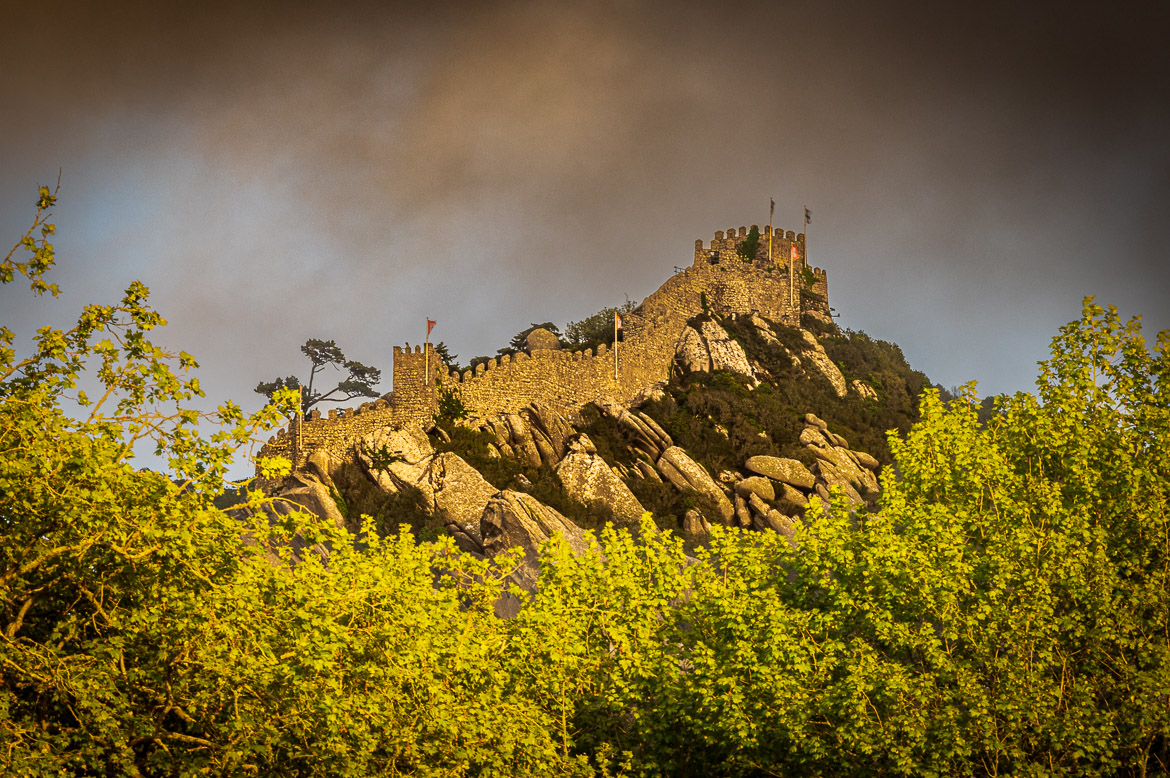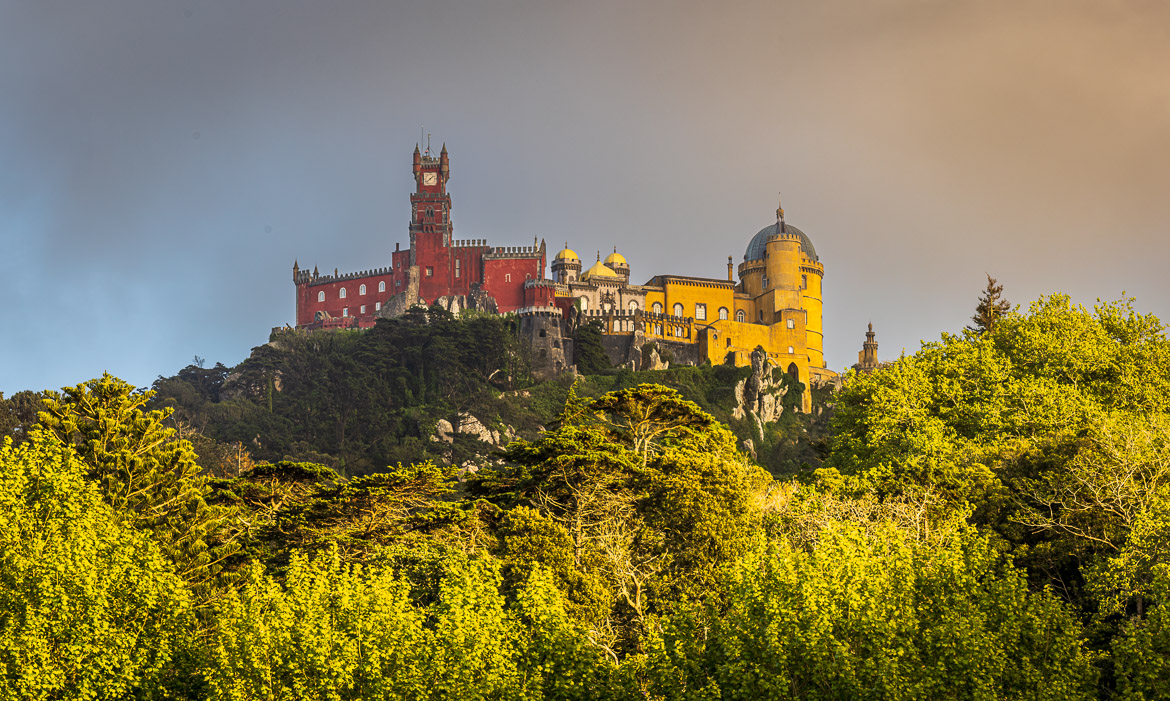
I had been told off both by my wife and my friends for bringing my children to Portugal and then dragging them around the hinterlands towards the Spanish border instead of staying at a luxury hotel in Algarve. As a tiny compensation Jennifer and I decided to stay two nights at Sintra with nice hotels and lots of shops and activities to do – and hordes of tourists. And I promised not to bring the children along on any photographic expedition while we were at Sintra. But I couldn’t restrain myself and had to capture some photos from our visit.
We stayed a Palácio de Seteais. This was where the Convention of Sintra was signed in 1809 after the British and Portuguese forces had defeated Napoleon. Seteais was converted into a luxury hotel in 1955. Jennifer and I had been there before, but this was the first visit by our children.
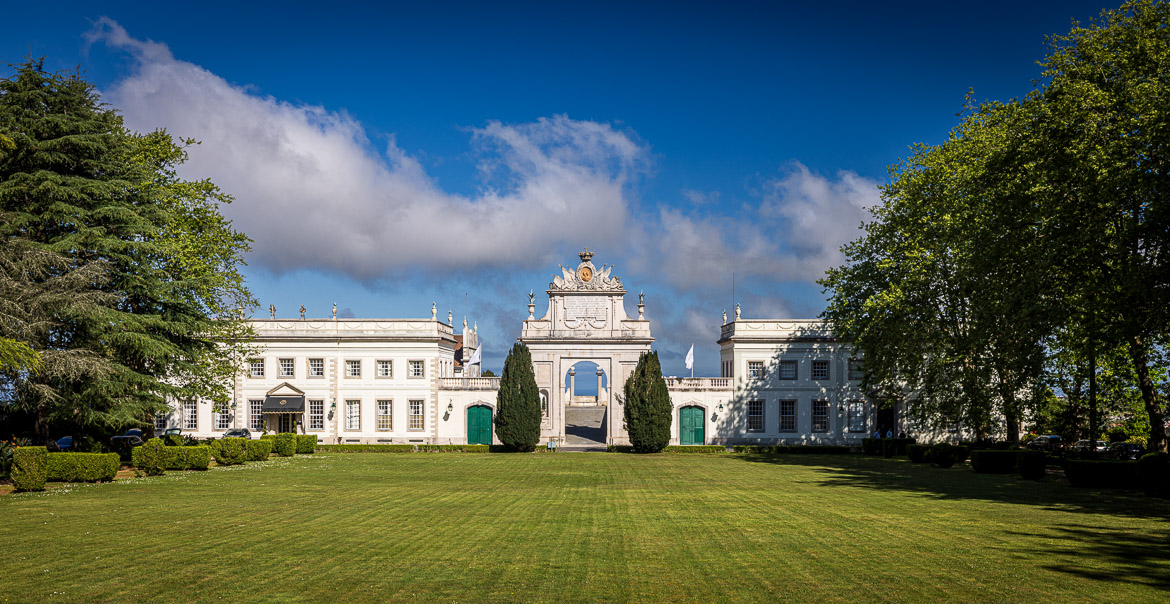
While the children went on their own adventures, Jen and I explored Quinta da Regaleira, built towards the end of the 19th C in a mixture of Gothic, Manueline and Renaissance styles that would be totally out of place anywhere except in Sintra. That is one of Sintra’s most spectacular sites with beautiful gardens climbing up the steep hill behind the palace and full of follies, grottos, wells, fountains and whatever else an eccentric wealthy owner could imagine at the end of the 19th century.
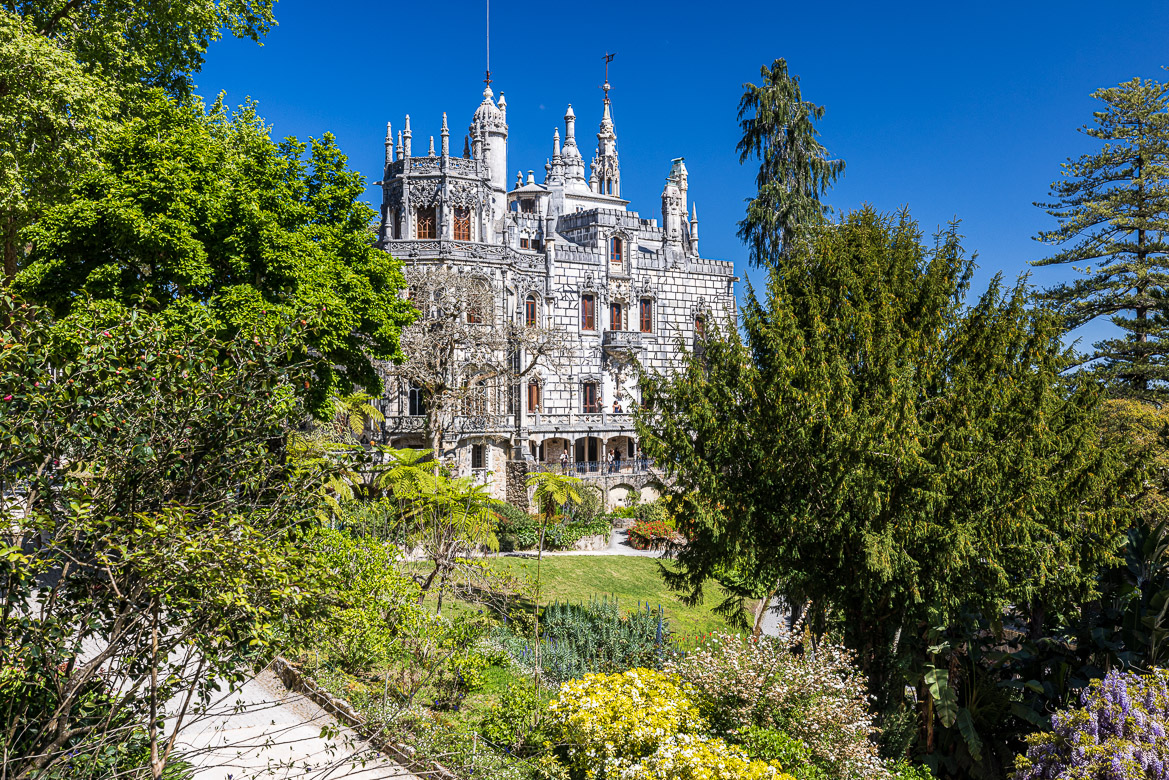
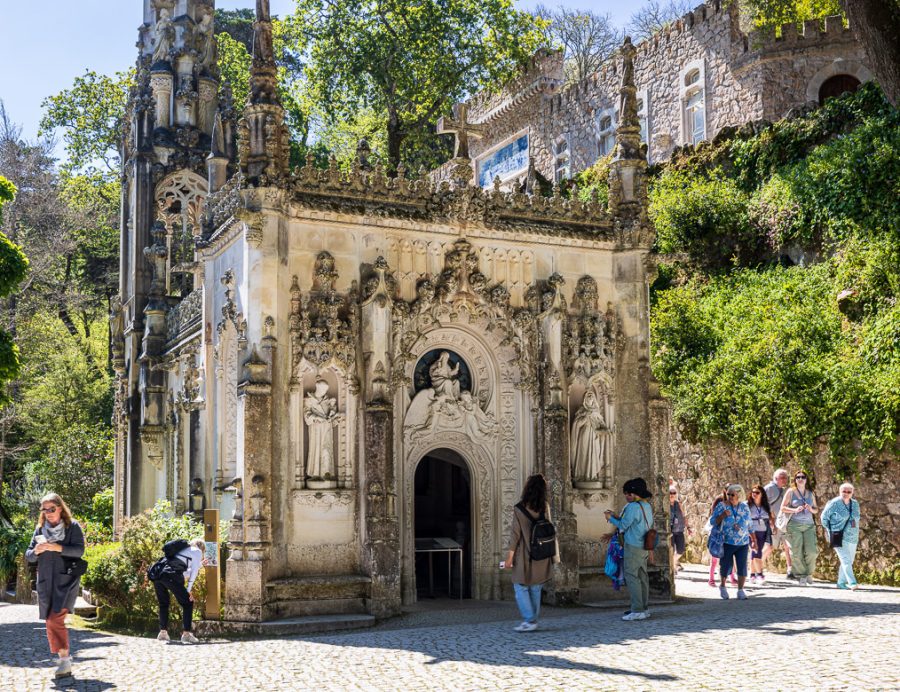
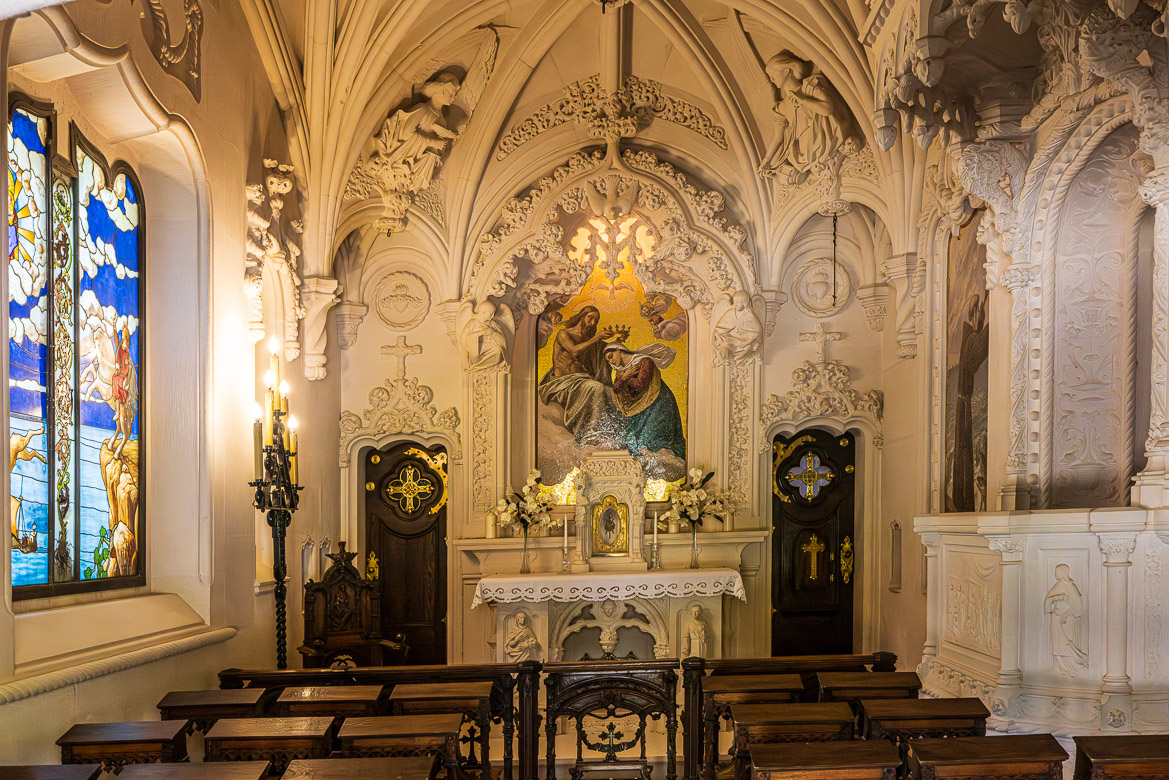
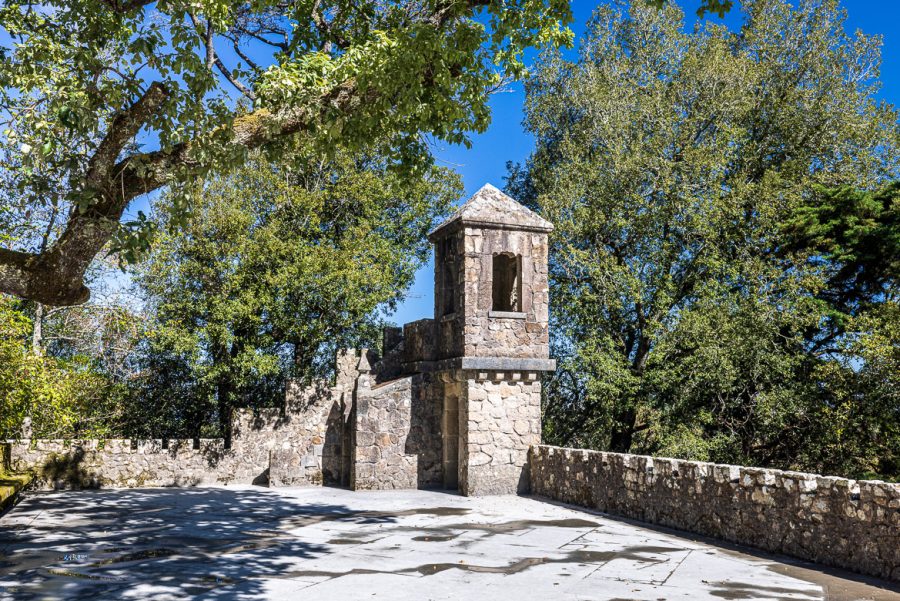
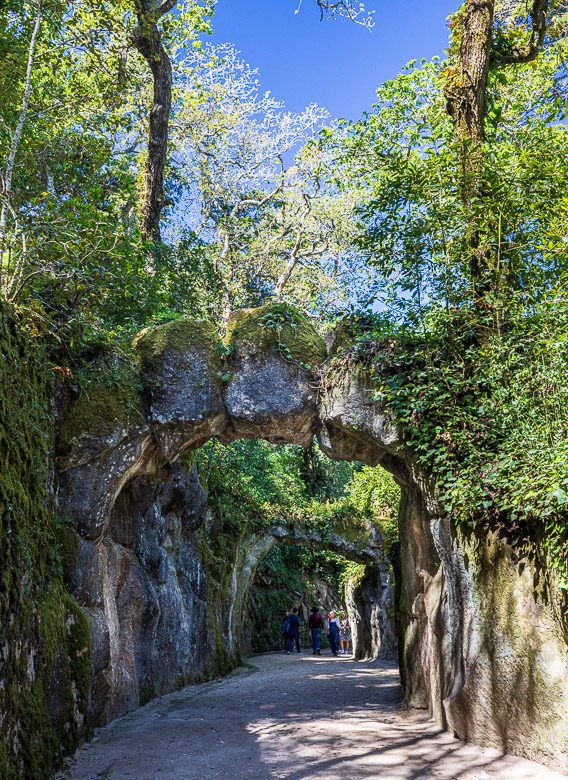
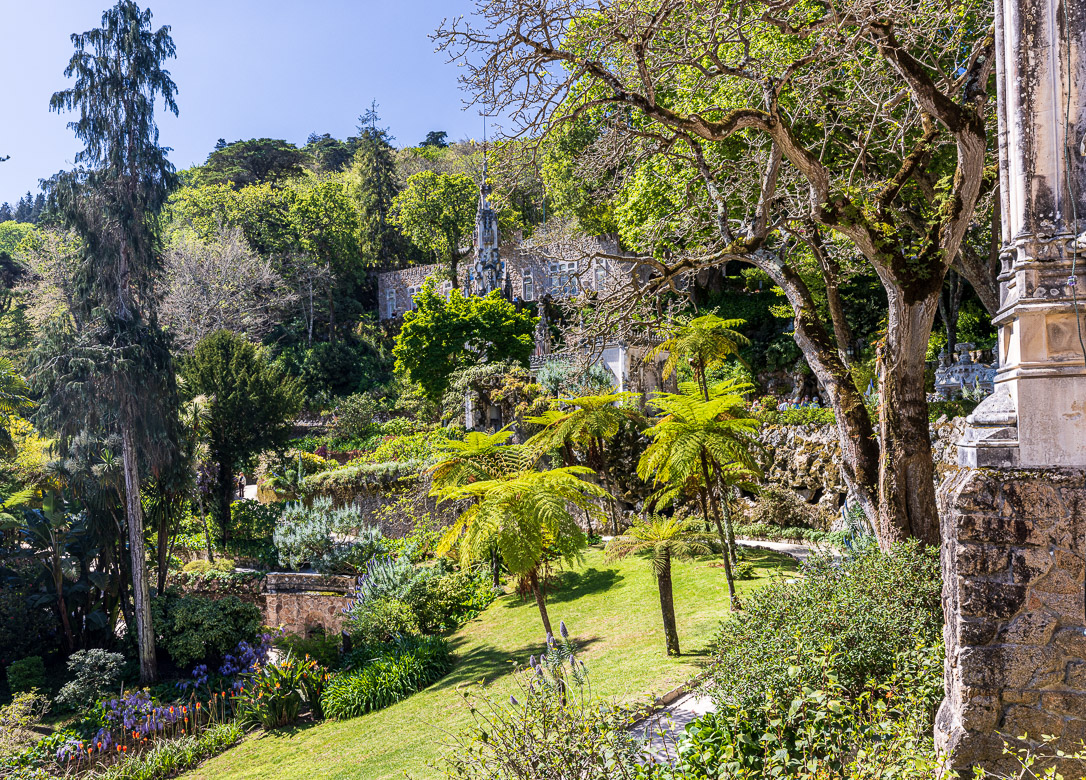
While Jennifer and I visited Quinta da Regaleira Mikee and Eric paid a visit to Palácio Nacional de Sintra, a medieval royal palace with a minimalistic gothic exterior but elaborate interior. It was constructed in the 14th century by King João I and is the best preserved of all the old palaces built for the Portuguese royalty.
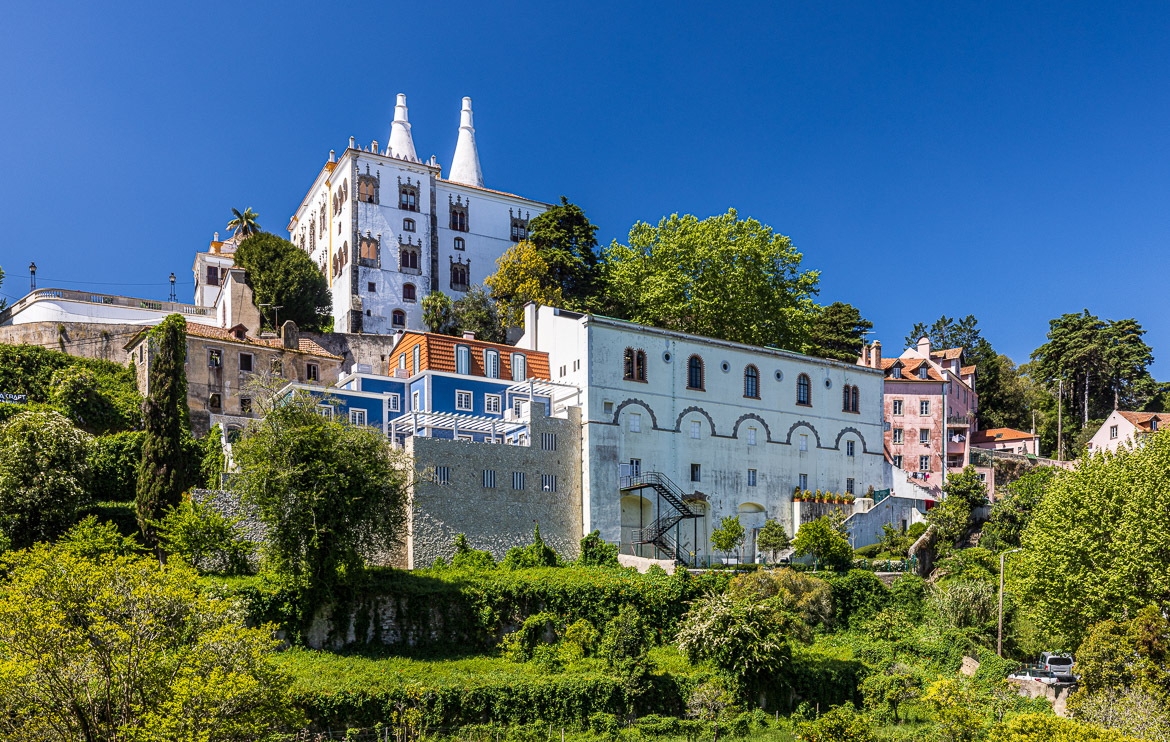
We didn’t have time to visit any more of the fabulous places and monuments in Sintra, but in the evening I captured an image from the gardens of Palácio de Seteais, where we stayed, looking up towards the hilltops, where another spectacular palace towered over the town, Palácio Nacional da Pena. Palácio Nacional da Pena was built in the 19th century on the ruins of an old monastery and constitutes a major expression of 19th C romanticism. My photo is at the very top of this post. Jennifer and I visited it in 2005, while we sailed on board Adèle, and I cannot resist publishing two images from that time.
Finally, at the same time as I captured the top image of Palácio Nacional da Pena I also photographed the Castelo dos Mouros, a Moorish hilltop fortification from the 11th century. The fortifications were restored at around the same time as the Pena palace was erected. It was the wonderful evening light after we have had rain in the late afternoon that tempted me to set up my tripod at our hotel, while my family (again!) had to wait for dinner a while. Castelo dos Mouros and Palácio Nacional da Pena are both of them situated on adjacent hilltops far above Sintra itself.
